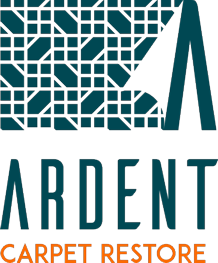Revitalize your wrinkled carpet!
Ardent's Carpet Re-Stretching
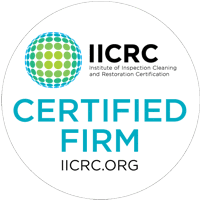
Carpet stretching is one of our primary specialties. Ardent Carpet Restore is an IICRC-certified firm and a proud Carpet & Fabricare Institute member. Vincent, the one-person operation, brings 22 years of experience and holds numerous certifications, including Carpet Repair & Reinstallation. The IICRC (Institute of Inspection Cleaning and Restoration Certification) recognizes him as a Master Textile Cleaner, Master Fire and Smoke Restorer, and Practicing Senior Carpet Inspector. We are passionate about restoring carpet—it's in our name!

What sets Ardent Carpet Restore apart?
At Ardent, we strictly adhere to the Carpet & Rug Institute guidelines. The Carpet & Rug Institute, or CRI as it is known, established standards for residential and commercial carpet installation using information from carpet mills, installers, and industry leaders. Our commitment to following the established written standards for carpet stretching and installation sets us apart from many other service providers. We’ll make sure it’s done right!
We use professional tools, including a power stretcher, to stretch your carpet to specifications. Even if the areas needing stretching are still occupied, we can move furniture to get the job done right. We often find the underlying issues that contributed to the failure and fix them to prevent them from happening again. Our work is guaranteed for at least one year, but we expect it to last the carpet's life, giving you peace of mind.
What you need to know about having your carpet re-stretched
The rooms having carpet re-stretched need to be empty for it to be done correctly and effectively. This might only sometimes be practical, so we have tools to help us move and manipulate certain furniture items. There are added costs associated with handling your furniture.
One or more existing carpet seams often need to be opened to perform the stretch or relieve the excess. This is most often done at a doorway. Re-stretching a hallway carpet can sometimes require opening multiple seams if it is connected to various rooms or has turns and angles. We will re-construct any seams we open, and we are very good at it. However, it's important to note that there is no such thing as an invisible seam in a textile product like a carpet. Just as the seams on your clothing are visible, they are on textile floor coverings.
Seam-peaking occurs on all stretched-in carpets (even a new installation). This is normal and a matter of physics as all the tension is applied to the secondary backing and the glue tape. This tends to be more noticeable on thin, looped-pile carpets, whereas it tends to be less noticeable on thicker, cut-pile carpets. A few tricks can be done during the original installation to help minimize their appearance, but it cannot be prevented. We cannot prevent this from happening or becoming more noticeable during a post-install, re-stretching service. Frankly, if it wasn’t evident before, it may be because the carpet was not adequately stretched to start.
While re-stretching the carpet will flatten out the wrinkles, there are often visible lines where they were. This usually occurs when the wrinkles have been left unaddressed for an extended period of time. The peak of the wrinkle can cause the pile direction to change in opposing directions, forming these very stubborn lines. Vacuuming and cleaning the carpet usually have a minimal effect on them. Occasionally, using a steamer and a carpet groomer can help improve the appearance.
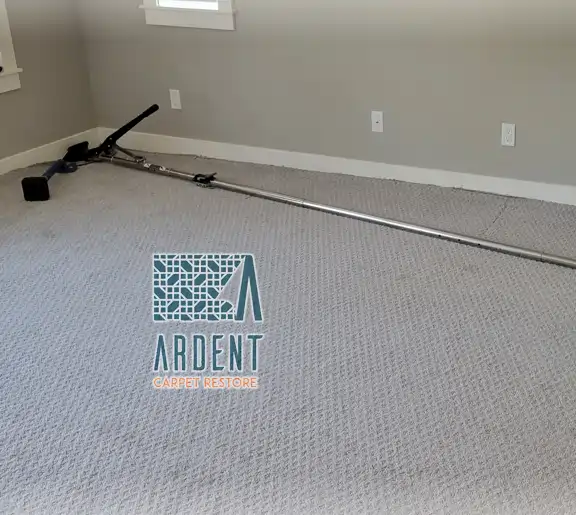
Power Stretching
We use a power stretcher on all carpets, a vital tool in our work, whether reinstalling or addressing wrinkles. This carpet is buckling throughout the dwelling. The CRI-105 standard requires all carpets to be installed using a power stretcher, except for stairs. This underscores the importance of our tools and equipment in ensuring quality work, and we're here to ensure you understand why.
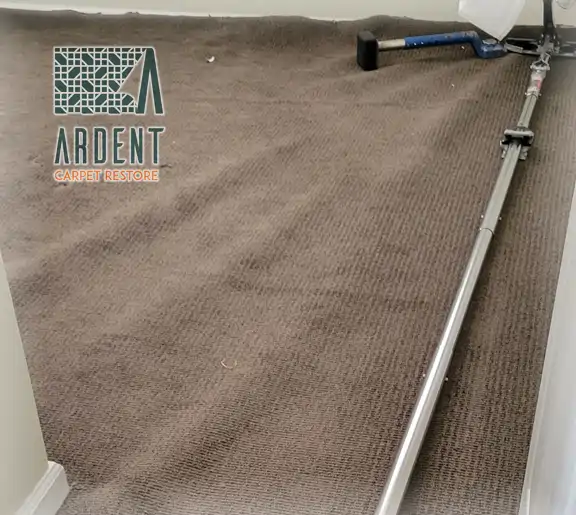
Laid vs. Installed
This is a prime example of a carpet being laid but not installed. Notice the severe, diagonal bubbles forming as I begin to make the first stretch away from the doorway. There was about 4-6 inches of excess here. The carpet had most likely been rolled out, seamed, and trimmed without any consideration for stretching it to standard.

Before and After Stretching
Here, we have the same carpet as in the previous photo, but after our re-stretching process, it's not just improved; it's transformed. The buckling is gone, and the carpet now looks smooth and well-installed. We've also taken the extra step to clean the carpet after re-stretching, clearly visible in the after-photo. This not only enhances the appearance but also the quality of the carpet, showcasing the effectiveness of our services.
What causes carpets to buckle?
Several factors can lead to carpet wrinkling, which we call buckling. Some of these issues are related to installation. Others include temperature and humidity changes, heavy furniture movement, heavy rolling traffic, and damaged or failing bonds in the latex (delamination).
Installation issues
The most common issues we come across are related to the original installation. The labor pricing for carpet installation hasn’t changed much over many decades. Factoring for inflation translates to more jobs needing to be done much faster, which means shortcuts are being taken. Often, the carpet is not adequately installed but “laid” and trimmed to fit. Unless otherwise dictated by the manufacturer, carpets should be stretched 1-1.5%, which translates to 1.2 to 1.8 inches of stretch on a 10-foot span or 2.4 to 3.6 inches on a 20-foot span. That might not sound like much, but it is a significant difference when you have the carpet laid out.
Another commonly overlooked factor for residential carpets is the acclimation of the product before installation. All flooring products need time to acclimate inside the dwelling before installation; carpet is no exception. While this practice is commonly used on commercial properties for carpets, it is often skipped for residential installations, primarily due to the need for more space for a carpet roll to dwell. The unacclimated material could expand and contract due to temperature and humidity changes.
Sometimes, there’s not enough stability underneath the carpet. We have found loose tack-stripping where the anchoring gave way. A common mistake we’ve encountered is concrete nails used to anchor the tack strip to a wood subfloor—it doesn’t hold forever because it wasn’t designed for the material. Longer carpet spans may require wider tack strips with an additional row of pins or two rows of tack strips. Inadequate cushion or padding underneath the carpet can also be an issue.
The old saying, “You get what you pay for,” applies here. If you’re about to purchase new carpeting for your home or business, be wary of big-box stores offering free or discounted installation. Make sure the person(s) installing the carpet are paid well. This is hard, physical, skilled labor and should not be discounted.
Temperature and Humidity Changes
Another factor contributing to carpet wrinkles is humidity and temperature. This can be especially problematic if a stable range is not maintained indoors and the dwelling experiences large swings of humidity and temperature. Here in Sacramento, we have rivers, and our humidity ranges from 53% to 83%, with 66% being the annual average. The ideal humidity level inside a home is 30-50%. Specific areas can get cold in winter. When the inside of a dwelling is allowed to drop below 55 degrees Fahrenheit, this can cause stability issues for the carpet and void the warranty.
Heavy furniture movement or heavy rolling traffic
Dragging heavy furniture across the carpet or rolling traffic may cause wrinkles or bubbles. Moving the item back relieves the bubble if you have just moved furniture. Using extra-large furniture sliders or lifting items off the carpet can help prevent this from happening when moving furniture.
Delamination
Another possibility is that the carpet has delaminated. That means the bond between the primary and secondary backings has given way. We often see this occurring from heavy or untreated pet urine deposits, carpets affected by spills or water intrusions that weren’t dried out quickly enough, solvents being misused, or, rarely, a defect in the latex bond. While re-stretching may improve the appearance, it doesn’t address the issue. Sometimes, we can glue or inject new latex to re-bond between the two backings.
Wavy after a carpet cleaning
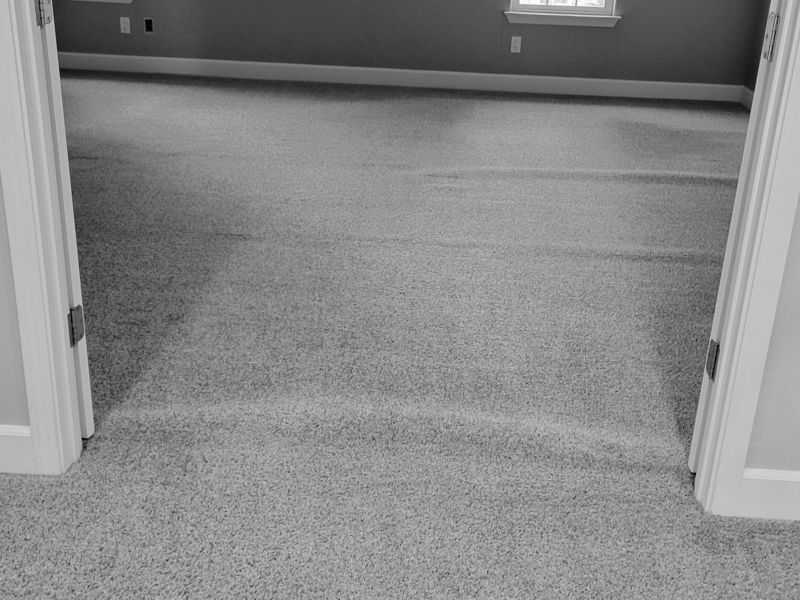
A small but significant percentage of carpets become wavy shortly after being cleaned. This situation can be extremely alarming, but don’t worry—this is not a defect, and nothing is wrong! There’ve been many theories as to why this happens. Still, the most likely cause is the different expansion and contraction rates of the various materials involved in the carpet’s construction. As materials get wet, are exposed to high-temperature water, and begin to dry, they expand and contract differently. This is similar to how the curve is smithed into a Katana sword. There is no need to have the carpet re-stretched in this instance! The carpet will relax and lay flat once it has thoroughly dried.
The Cost
The costs associated with re-stretching carpet can vary. Due to the time, equipment, and labor involved, we have a minimum starting fee of $300. Carpet stretching is typically charged by the square yard or square foot and encompasses each full room to be stretched. When re-stretching a room, the entire carpet is engaged, so the cost will be to stretch the total square footage of each affected room, including connected closets. We can usually provide a rough ballpark range with adequate information, but we will need to measure and assess the carpet to give an accurate cost. Free consultations are offered before scheduling services so you can plan your budget.
Contact Us
Phone
(916) 680-6311Address
836 57th St, Ste 421Sacramento, CA 95819

